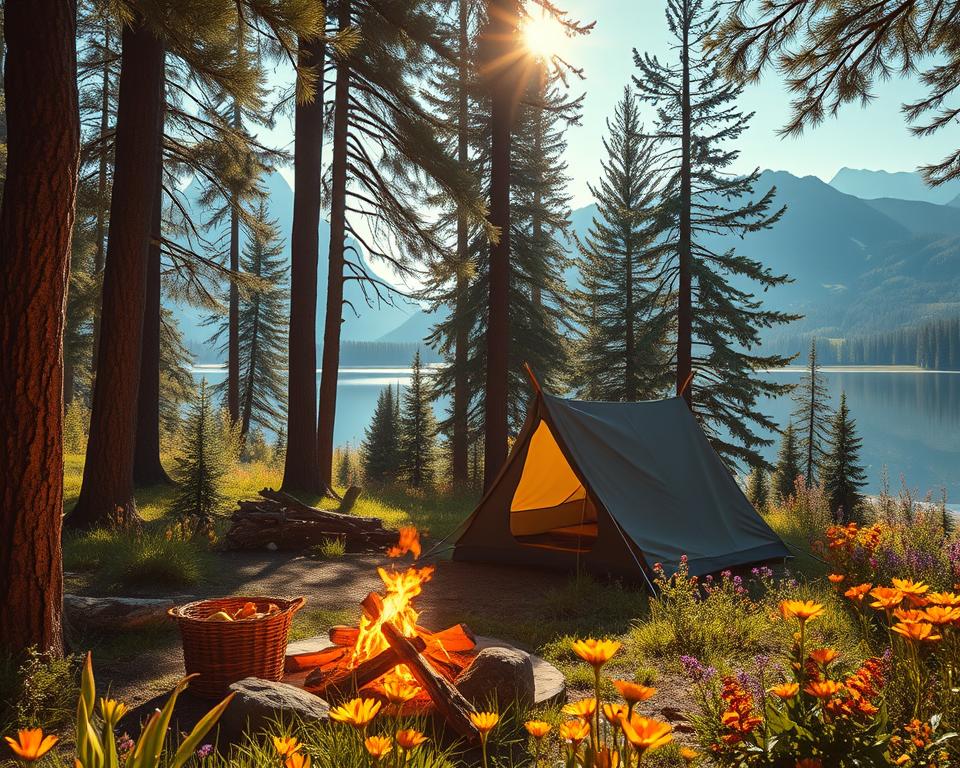If you’re seeking an inspiring wilderness camping experience, wild camping is perfect. It lets hikers truly connect with nature. You can find quiet nature escapes and less-visited hiking trails. Choose spots in state parks, national forests, or public lands for a real outdoor adventure.
I’ve explored backpacking destinations across six continents for over a decade. Wild camping helped me save money. In fact, I saved about £1,200 in four months compared to staying in hotels. But it’s more than just saving money. It’s about experiencing untouched natural wonders.
To find the best wild camping spot, plan to search during daylight. This often means exploring areas managed by the Bureau of Land Management or National Forests. Use apps like The Dyrt, iOverlander, and Gaia GPS. They help make finding spots easier.
What is Wild Camping?
Wild camping, or dispersed camping, is when you camp in undeveloped areas. It’s not in a regular campground. This kind of adventure travel lets campers dive deep into nature. They often stay on public lands like National Forests or BLM land. Best of all, it’s usually free. It’s a perfect way to enjoy free camping and backcountry camping.
Wild camping is about peace and being alone, away from crowded campsites. It connects you deeply with nature. However, it means you need to be self-reliant. You’ll need to pack a tent, sleeping bags, cooking gear, a camp stove, and stuff for clean water. Sometimes, even a portable generator is good to have.
In the USA, wild camping has a 14-day limit at one spot. Campers should know and follow the local rules. This is crucial in sensitive areas. Note that National Parks don’t allow wild camping. You can only stay overnight in specific campgrounds or backcountry camping sites.
When it comes to bathroom needs, dig a hole and cover it afterwards. For showers, try a camp shower, baby wipes, or lakes and rivers. Always remember to follow Leave No Trace. This helps keep our natural places clean and healthy. It’s part of sustainable tourism.
Looking for a place to camp? Try apps like TheDyrt, iOverlander, and Campendium. Gaia GPS and OnX Maps are also great. They have lots of campsite info to help plan your trip.
Wild camping can take you to amazing places like the Valley of the Gods in Utah. Or maybe near Flagstaff, AZ. It’s a way to see the untouched beauty of nature. Plus, it encourages camping that cares for our environment.
Top Wild Camping Spots for Hikers
The United States has many beautiful wild camping spots for hiking lovers. There is nothing like setting up a tent in the midst of nature, away from busy campgrounds. Let’s explore some top wild camping areas that offer amazing views, high mountains, and quiet lakes for a peaceful getaway.
Sawtooth Mountains, Idaho
The Sawtooth Mountains in Idaho are a dream for hikers. These jagged peaks and clear lakes make for a stunning place to camp. Make sure to get camping permits if needed, as rules change to keep these places safe.
Glacier National Park, Montana
Glacier National Park is loved for its vast wilderness and breathtaking landscapes. It has many scenic spots and campsites for hikers to enjoy its valleys and meadows.
Yellowstone National Park, Wyoming
Yellowstone is famous for its natural beauty and wilderness. To camp near its geysers and wildlife, you need to get a permit, which is about $25. This helps you find the best place to see the mountains and trails.
White Mountain National Forest, New Hampshire and Maine
The White Mountain National Forest stretches across New Hampshire and Maine. It mixes green foliage and tough trails, perfect for hikers who want wild, yet reachable camping spots. The views in autumn, with the forest full of color, are stunning.
Grand Teton National Park, Wyoming
Grand Teton National Park has camping all year round in a beautiful setting. Campers can see Grand Teton Peak and Jackson Hole’s wide views. Dispersed camping offers a chance to enjoy the quiet of remote lakes and tall mountains.
Getting ready to explore these top camping spots takes planning and an adventurous heart. Don’t forget to look up local rules, get any needed camping permits, and follow Leave No Trace rules. This helps keep these beautiful spots perfect for everyone in the future.
Essential Tips for a Successful Wild Camping Experience
Wild camping lets you deeply connect with nature. To have a safe and fulfilling time, you must consider key things. We’ll share important tips to enhance your wild camping adventures:
Fire & Water Safety
Following local fire rules is crucial to avoid large wildfires. Always check with local authorities about open fires before your trip. It’s vital to camp near water for hydration, but keep a respectful distance to prevent water contamination. Use filters or boil water to make it safe to drink.
Safety Considerations
Your safety is the top priority in the wild. Carrying emergency devices like a satellite phone or GPS locator can save your life. Being aware of wildlife is crucial; store food and valuables securely to not attract animals. Also, camping with someone adds extra security.
Be Prepared for Minimal Amenities
Wild camping means you won’t have many amenities. Be ready for no toilets or showers. Remember to follow Leave No Trace principles to protect nature. This includes taking all your trash and limiting your impact. Portable stoves and no-cook foods are good for eating.
Packing Light
Packing light makes wild camping more enjoyable. Light camping gear makes your load lighter and traveling easier. You need a good tent, sleeping bag, mat, stove, and enough food and water. Carrying less also means you’re being more eco-friendly.
Understanding the Regulations of Wild Camping in the US
Wild camping in the US requires knowing the rules. These rules come from agencies like the Bureau of Land Management and the Forest Service. They let us camp on public lands if we follow certain guidelines.
You must move camp every 14 days to lessen your impact. Avoid camping in ‘NO CAMPING’ areas. Also, camp away from roads and water to protect nature.
Following Leave No Trace (LNT) principles is also key. These rules help us leave the outdoors as we found them. For example, we must handle our waste properly and be careful with campfires.
In some spots, you might need an America the Beautiful Pass or permits. It’s important to check the local rules and get any permits you need. Good planning includes looking at maps and the weather. Paper maps are useful where there’s no cell service.
Knowing how to camp legally is crucial for wild campers. This might include special rules in national parks. It’s smart to talk to local rangers for the latest info. This ensures a safe and fun trip.
Being ready and testing your gear before you leave is also important. Pack the right clothes and water filters. Secure your food properly. These steps make camping better and protect the outdoors.
If you want to learn more about wild camping, check out this guide on wild camping. By being informed and ready, we keep wild camping enjoyable for everyone. This way, we can keep these places beautiful for those who come after us.
Recommended Apps and Tools to Find Wild Camping Spots
Getting ready for a wild camping adventure? The right tools can make it much easier. There are many great apps and navigation tools for campers. Here are some of the best ones to improve your camping trip.
TheDyrt
TheDyrt is a top choice for finding camping spots in the US. It has a huge list of sites and reviews. TheDyrt PRO adds offline maps and trip planning for $35.99 a year, plus a 7-day free trial. Look for a 30% Black Friday discount. This makes planning your outdoor trip easy and effective.
iOverlander
iOverlander is an excellent app for finding dispersed campsites. It’s really good for those needing GPS while exploring far-off places. As it’s community-driven, you get updates and tips from other campers. This helps you discover hidden camping gems.
Gaia GPS
If you need detailed maps and navigation, Gaia GPS is key. It offers offline maps for all over the world. You can get Gaia GPS Premium for $39.99 a year, with a 20% discount on memberships. Perfect for those hiking abroad needing thorough GPS tools. Gaia GPS works well with other camping technologies.
Using these apps and tools can make planning your outdoor adventure simpler and more fun. Whether you’re after a huge database, updates from other campers, or detailed maps, these tools are essential. They will ensure your camping trip is a great success.
What Fun Activities Can Enhance My Experience at the Best Wild Camping Spots?
Exploring the best wild camping spots comes alive with outdoor adventure activities. Whether it’s hiking through scenic trails, kayaking in serene lakes, or rock climbing rugged cliffs, each activity enhances your experience. Engaging in these thrilling pursuits not only fosters connection with nature but also creates unforgettable memories.
Conclusion
Wild camping lets you dive deep into nature, far from the regular campgrounds crowded with people. It helps you connect deeply with the wilderness. This way, you can create unforgettable memories. By preparing well and being mindful, wild campers can enjoy nature without harming it.
For a great wild camping trip, you need to know outdoor skills. These include finding your way, surviving in the wilderness, and setting up camp. It’s also important to have good gear, like a sturdy tent, a cozy sleeping bag, and a small stove. And remember, following Leave No Trace principles is key to protect nature.
It’s crucial to know the rules for wild camping in different places. In Scotland and some Scandinavian countries, you can wild camp if you follow certain rules. But in the French Alps, you can only camp above the treeline. Europe’s long-distance trails also have their own rules. So, it’s important to do your research and maybe ask local experts for advice. By camping responsibly, we can all help keep wild camping fun and sustainable.

